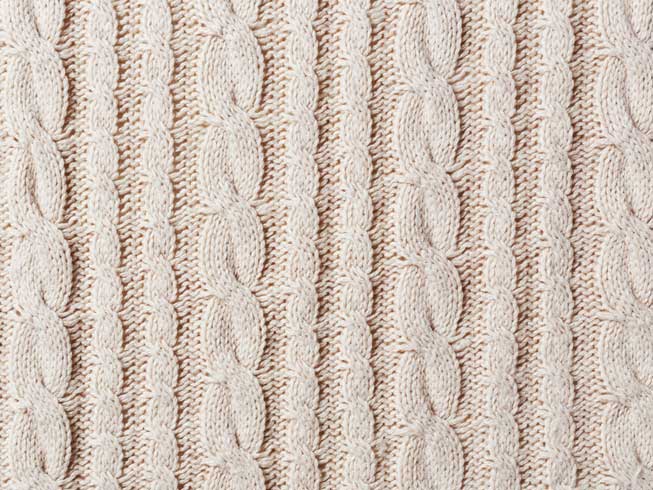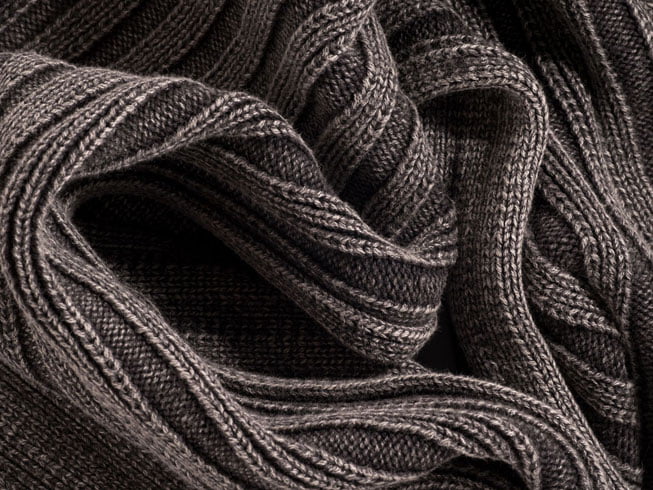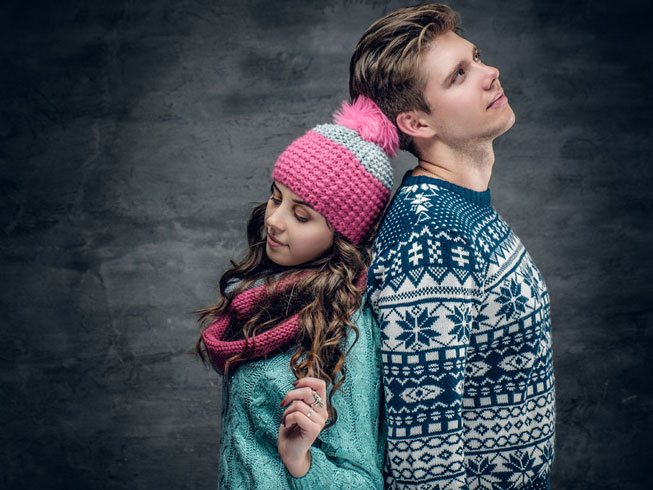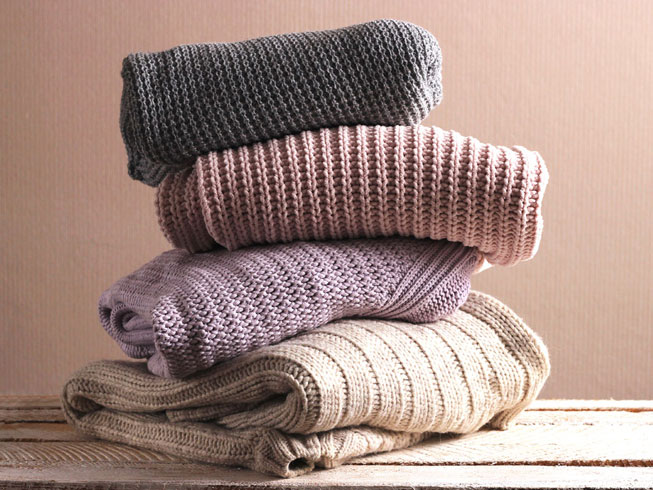Fabric Type
Cable Knit FabricCable Knit Fabric
Description:
Cable Knit fabric is a double knit fabric made by the special loop transfer technique. The wales in the fabric have a rope-like an appearance, where plaits are based on the transfer of loops with adjacent wales. The fabric has an interesting surface texture like braids as the loops cross each other.
Usage:
Cable Knit Fabric is widely used as sweater fabric. It is the best alternative for knitwear production. Using a cable knit fabric in your production would avoid the price and overwhelmed demand problems in knitwear production. The classic cable knit fabric is a stylish cotton fabric which is soft against skin. Great choice for casual dresses, jackets and vests. On a cable knit fabric there is a knitting pattern in which cables produce a heavy cord. This stitch is most often found in sweaters.
Fabric Type:
Cable Knit Fabric
Also Known As:
Rib Knit Fabric
Cardigan Knit Fabric
Sweater Knit Cable Fabric
Cable Knit Jaquard Fabric
Print Type Available:
Digital
Width:
130-150cm
Weight per m2:
220-450gr/m2
Minimum Order Quantity:
400 kg per colour plain
400 kg per design Digital Print
For Garments:
Cardigans
Pullovers
Sweaters
Vests
Jackets
Dresses
Yarn Fiber Type:
%100 Organic Cotton (only combed)
Organic Cotton Blends
%100 BCI Cotton (only combed)
BCI Cotton Blends
%100 Cotton (Recycled, OE, Carded or Combed)
Cotton Blends
Wool Blends
Acrylic Blends
Polyester Blends
Recycled Cotton Polyester Blends
Possible Fabric Production Certifications:
Oeko-Tex
BSCI
Sedex
Marks&Spencer
C&A
Inditex
Primark
Approximate Minimum Price:
12,00 USD/kg plain (Recycled Cotton Polyester Blend)
More About Cable Knit Fabrics:
Cable knit fabric production is a style of knitted fabric production in which textures of crossing layers are achieved by permutting stitches.
Cable knit fabric usually produced as a fabric that is less flexible and more dense than typical knited fabric. The narrow width should be considered when changing from the cable stitch to another type of knitted fabric. If the number of stitches is not reduced, the second knitted fabric may flare out or pucker, due to its larger width.
If there are two cables on a cable knit fabric the cables should cross each other completely in a single row because making an intermediate crossing row of fewer stitches look good is very difficult. For example, where a pair of three-stitch-wide cables cross, all three stitches of one should cross over the three of the other cable.
On the cable knit fabric cables are often used to make braid patterns. Usually, the cables themselves are with a knit stitch while the background is done in purl. As the number of cables increases, the number of crossing patterns increases, as described by the braid group. Various visual effects are also possible by shifting the center lines of the undulating cables, or by changing the space between the cables, making them denser or more open.
A one-cable serpentine is simply a cable that moves sinusoidally left and right as it progresses. Higher-order braids are often made with such serpentines crossing over and under each other.
A two-cable braid can look like a rope, if the cables always cross in the same way (e.g., left over right). Alternatively, it can look like two serpentines, one on top of the other.
A three-cable braid is usually a simple plait (as often seen styled in long hair), but can also be made to look like the links in a chain, or as three independent serpentines.
A four-cable braid allows for several crossing patterns.




